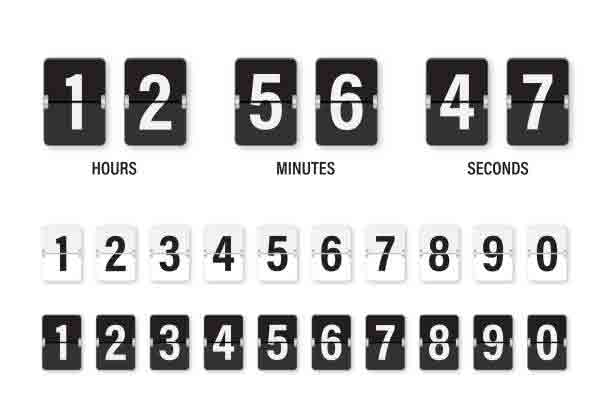Setting a timer has never been easier! Timers can be a great way to track time, stay organized, and keep an eye on the clock. Whether you are setting a timer for work or leisure, learning how to set and use one effectively can save you valuable time. Here we will discuss the basics of setting a timer and answer some frequently asked questions about timing.

Getting Started:
Setting up a timer countdown is simple and straightforward. First, decide what type of timer you want to use. You can choose from analog timers, digital timers, online timers, or even automated timers that time tasks for you. Once you have chosen your type of timer, it’s time to set it up.
Setting Your Timer:
Depending on your type of timer, setting it may vary slightly. For analog or digital clocks with numbers on them such as those found in most kitchen appliances, all you need to do is spin the dial or press the buttons until you reach your desired amount of time. For more specialized types such as online or automated timers, instructions may be provided by the manufacturer if needed.
Using Your Timer:
Once your timer is set up and ready to go, all that’s left is using it effectively! Most timers have an alarm feature which will sound when the allotted amount of time is up so make sure to turn that on if necessary and adjust its volume accordingly. Additionally, for tasks with varying amounts of difficulty or complexity such as cooking meals or studying for exams try setting specific intervals throughout your task (e.g., every hour take five minutes off). This helps keep yourself from burning out too quickly and allows plenty of time for breaks in between periods of intense focus!
How do I know when my timer has gone off?
Most timers come with either audible alarms or visual indicator lights which signal when the allotted amount of time has passed. Generally speaking though if you hear an alarm going off this means that your timer has finished counting down!
What should I do if I don’t hear my timer’s alarm?
If this happens check to make sure that the volume on your device is turned up to a reasonable level sometimes certain models have really low “default” volumes which can make hearing them difficult unless adjusted manually first! Additionally try checking other areas around where you set up the timer just in case often times these devices are designed to be heard through walls so searching for them nearby can help too!
Are there any other tips for getting better at using timers?
Absolutely! Try practicing setting short-term goals first before trying anything long-term this helps get familiar with how much time things will take as well as cultivate discipline over scheduling tasks better in general! Additionally if possible look into special software programs which can automate some parts of timing like tracking individual tasks within larger projects they usually require minimal setup but can save loads of effort on complicated projects later down the line!
Conclusions:
In conclusion knowing how to set a timer correctly can be a great way to stay organized and manage both work and leisure activities more efficiently by tracking progress accurately over longer periods. There are many different types available ranging from basic analog clocks all the way up to sophisticated automated software programs so whatever kind best fits your needs should suit perfectly! Plus once you’ve got everything setup correctly keeping an eye on time becomes much easier allowing more focus onto other areas such as working harder towards completing those goals faster than ever before!

Vivan Henderson, a professional photographer born in Texas. Photography is his passion. He was fond of nature in his childhood. So he took his passion as a profession. He is basically nature photographer but also take other type of photo. He completed graduation in computer science from Texas Tech University. He lives in Houston with his wife and two children’s.





